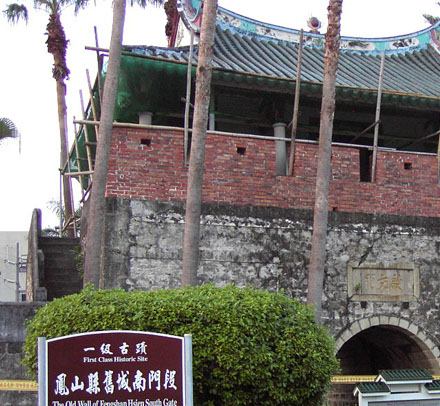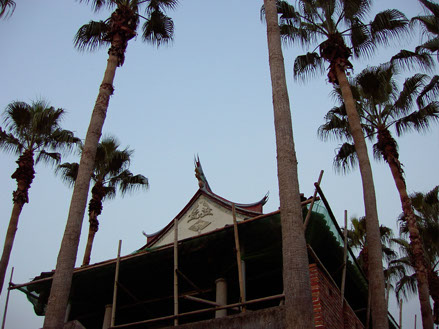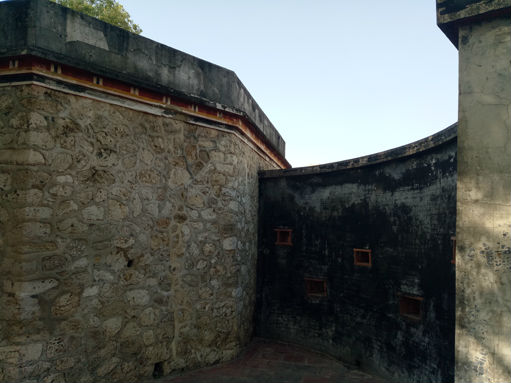
HOME
Dongying Gate of Zuoying
Named Fengyimen, it is now a designated monument of the Republic of China. It is located on Dongmen Road in Kaohsiung City. In the past, Dongmen Road used to be the main road leading to Yuantou Street (now Fengshan District). The wall of Dongmen remains relatively large. There are still hundreds of meters of the city wall on both sides of the gate. brick. There is a walkway entrance, the moat outside the city is still intact, and there is a bridge over the moat.


Zuoying Xicheng Gate
The other is called Dihaimen. After the completion of Daoguang in 6 years in Daoguang County, Fengshan County gradually withered because the county government moved to New Town (now Fengshan District), and the Department of Civil Affairs and Civil and Military did not want to relocate it. Some locals occupy the interior area here, and dense weeds even cover the gates. Now it has become a forgotten history.






Zuoying North City Gate
The Zuoying Beicheng Gate was built around the Ming and Qing Dynasties. The granite stone carvings on both the inside and outside of the arches were called "North Gate", and the outer gates were titled "Gongchen Gate". It is said that many gangsters often appear in the north of Kaohsiung, so residents painted terrible images on the surface of the two castle gates of the North Gate to scare away the robbers.


Pingcheng Fort
Fengshan Pingcheng Fort is currently listed as a National Grade III Monument. Behind the Heisei Fort, there are red brick stairs leading to the turret platform. The front is engraved with granite-engraved banners. At the time, the Heisei Fort was responsible for defending the northwest of the entire Fengshan County. West, it can prevent the enemy from invading directly; the Heisei fortress structure is square, and the outer wall made of gurgle and lime is very strong.



Qijin Fort
Built in the second year of Daoguangjing (1840), during the Sino-British Opium War, the Qing court built a fortress behind the flag as a precaution. The Qihou Battery was designed by a British engineer, although it is a Western-style battery.


Fengshan Chenglan Fort
Located in the corner of the back door of Fengshan Elementary School, it is an octagonal corner of the southwest corner of the county. The granite plaque is called "Chenglan", and the payment is "Daoguang Shiqian was established in June". The wall is made of chougu stone, and a short wall of about eight feet high pebbles is stacked on the outside. It is the remaining corner of the city wall that was rebuilt in the eighteenth year of Guangxu, and there are several "holes". The fort is located in the southwest corner of Fengshan County, at the intersection of Lizhi Street and Fuxing Street, and is a national level three monument. The pedestal of Chenglan Fort is irregularly octagonal. The city wall is made of a mixture of pebbles and stones. A plaque on the wall reads: "Chenglan".
The outer wall of Chenglan Fort is made of three-layered soil, which is a mixture of three kinds of two glutinous and eight pastes, brown sugar juice, and oyster shell ash. The horse lane of Chenglan Fort is very inclined. Its entrance to the tread has been destroyed. There is a gun on the platform of the fort, and there is a gun hole for the muzzle to aim.



Fengshan training wind turret
The fortress was a very important fortress for the Han Chinese and trade vessels that had reclaimed from China in the early days. The wind training turret is mainly constructed of pebble, and the banner is embedded in the city wall. The left and right sides are decorated with clay scrolls. The work is rigorous and artistic. However, the long fortress wall in the past has only more than ten meters today. Set monuments for the city.


East Gate
West Gate
SouthGate
North Gate
Pingcheng Fort
Qijin Fort
Chenglan Fort
Wind Fort